News + Media
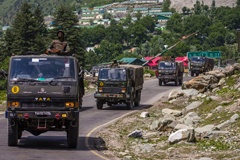 |
In the NewsJune 20, 2020Modi says China isn’t occupying Indian territory after clashArchana ChaudharyBloombergVipin Narang quoted: “The biggest implication is that wherever the Chinese have in fact changed the ground status quo—whether in Galwan Valley or Pangong Tso or elsewhere—is tacitly being accepted by the government as de facto Chinese claims,” said Vipin Narang. “One can litigate whether this is in fact ‘Indian territory,’ but it is tacitly accepting whatever faits accomplis China has undertaken.” |
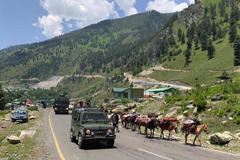 |
In the NewsJune 19, 2020China lays claim to entire Galwan ValleyAnanth KrishnanThe HinduM Taylor Fravel quoted: "Chinese maps that I have seen show almost all of the Galwan River as lying within the territory China claims in the area,” M Taylor Fravel, an expert on the Chinese military at MIT, told The Hindu earlier. "The one discrepancy would be the western tip of the Galwan River as it meets the Shyok River. Here, the last few kilometres of the Galwan River are often depicted as lying beyond China’s border. How one defines the parameters of the valley itself might be different than the river, however.” |
 |
In the NewsJune 19, 2020China Flexes Territorial Muscle – Recent India border clash signals risk Beijing will take in approach to disputes, experts sayChun Han WongThe Wall Street JournalM Taylor Fravel quoted: The use of such forceful tactics "reflects a continuity in China's approach under Xi," said M Taylor Fravel, a professor and director of the MIT Security Studies Program at MIT. "Whether it marks an inflection point in China's foreign policy and a willingness to use force in territorial disputes depends on what happens in the next few days and weeks." |
 |
In the NewsJune 19, 2020'PLA was acting with higher approval'Pottayil RajendranRediffM Taylor Fravel interviewed on the China-India border dispute. "I don't think China is looking for a wider conflict with India on the China-India border," Dr Fravel tells Senior Rediff.com Contributor Pottayil Rajendran. Read the interview |
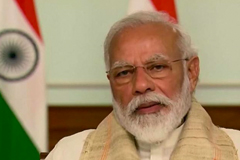 |
In the NewsJune 18, 2020Modi denies any Indian territory was lost in China clashThe Associated PressThe New York TimesM Taylor Fravel quoted: From a strategic perspective, Fravel said, China should want to drive a wedge between India and the United States to prevent any kind of counter-balance coalition. "The deaths and the clash on Monday night will probably very quickly and much more rapidly push India closer to the United States, which I think is probably not what China wants,” he said. |
 |
In the NewsJune 18, 2020Modi finds neighbors silent as India-China tensions simmerArchana Chaudhary and Bibhudatta PradhanBloombergVipin Narang quoted: “The optimistic view is that the tragic loss of life will incentivize both governments to energize their efforts to resolve the border dispute,” said Vipin Narang, associate professor of political science at MIT and author of ‘Nuclear Strategy in the Modern Era: Regional Powers and International Conflict.’ “The pessimistic view is that China has no intention of relieving the pressure that it is putting across the entire Line of Actual Control and that this is a long way from being over.” |
 |
In the NewsJune 17, 2020A watershed moment in India-China relations, says MIT's Vipin NarangKaushik VaidyaBloomberg | QuintVipin Narang was interviewed and heavily quoted in this article about the "violent face-off" in the Galwan Valley on Monday night in which 20 Indian armymen were killed in action. The political mood over the next several days in both countries will be critical he says. |
 |
In the NewsJune 17, 2020India and China trade barbs after ‘gang war’ high in the HimalayasJoanna Slater and Gerry ShihThe Washington PostM Taylor Fravel quoted: China probably has “little interest in further escalation,” said M Taylor Fravel, an expert on the People’s Liberation Army who heads the Security Studies Program at MIT. “China’s main competitor in East Asia and beyond is the United States, not India.” |
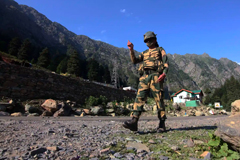 |
In the NewsJune 17, 2020Himalayan flashpoint could spiral out of control as India and China face offJulian BorgerThe GuardianVipin Narang quoted: “Now domestic politics and public opinion, especially nationalist pressure to avenge their deaths and escalate, becomes a dangerous force,” Vipin Narang, a security studies professor at Massachusetts Institute of Technology, said. “It will be hard for India at least, with a relatively open media, to de-escalate as easily now.” |
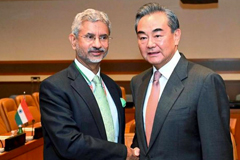 |
In the NewsJune 17, 2020Ladakh face-off | China’s Foreign Minister blames India ‘for deliberately provoking’ border clashAnanth KrishnanThe HinduTaylor Fravel quoted: China was unlikely to confirm the number, said M Taylor Fravel, an expert on the Chinese military at MIT. “I can think of no armed conflict involving China where it has released casualty figures publicly at the time of the conflict,” he said. “Usually, they are published years or decades later,” he noted on Twitter, pointing out that casualties from the 1962 were only revealed for the first time in an internal history published in 1994. |

